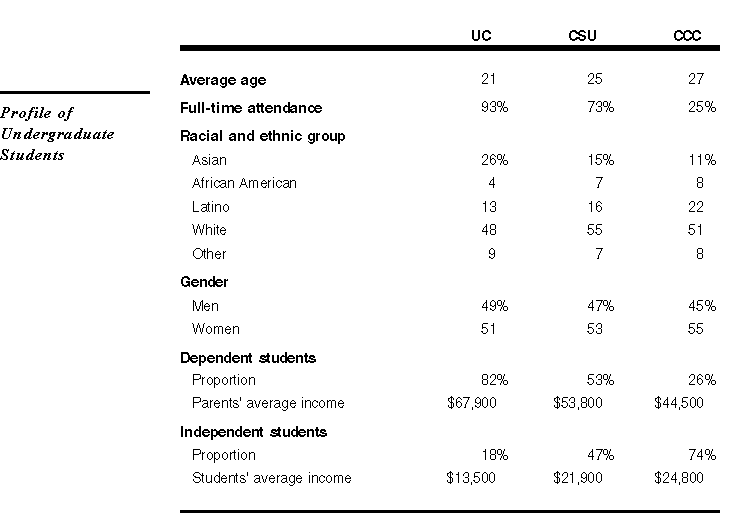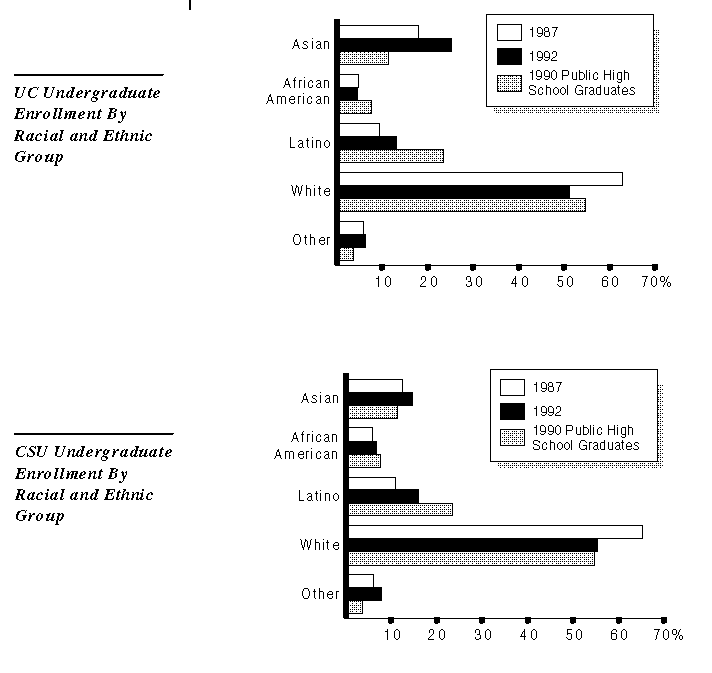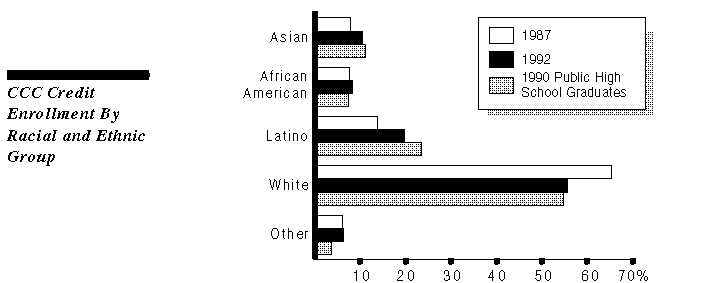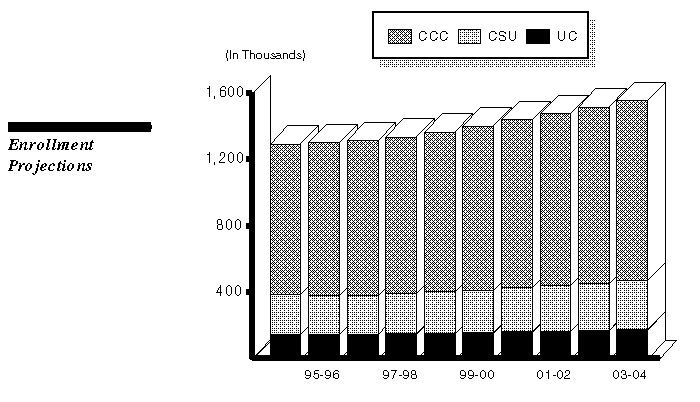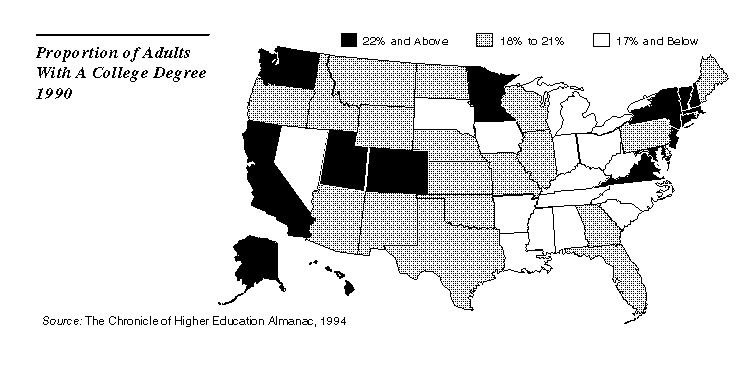
 Legislative Analyst's Office
Legislative Analyst's Office
HIGHER EDUCATION OVERVIEW
Twenty-three percent of the state's adults have attained a Bachelor's or higher degree, placing California in the top one-third of all states. The national average is 20 percent.

The vast majority (88 percent) of the state's college students attend public higher education institutions (top map).
Less than half of California's college students (44 percent) are enrolled full-time. This primarily reflects the large number of adults enrolled part-time in community colleges (bottom map).
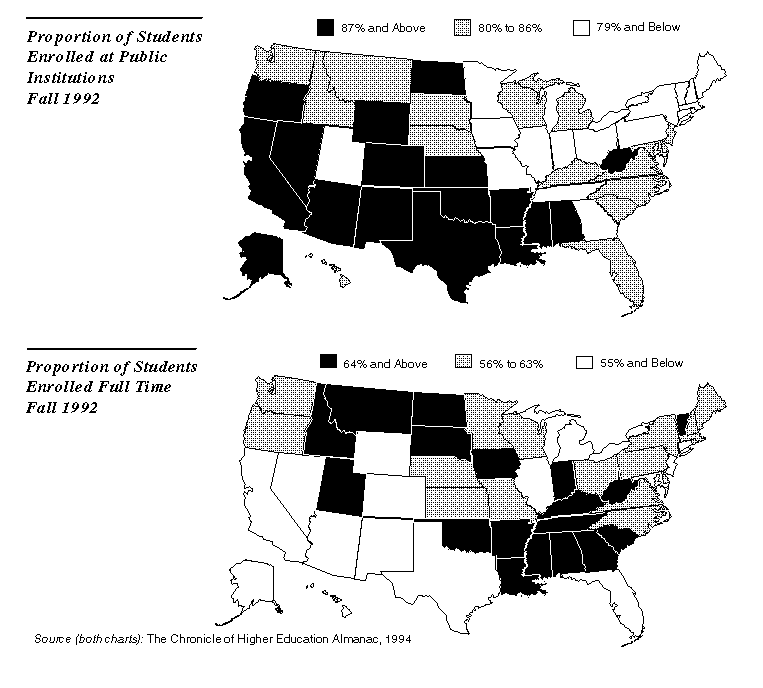
In fall 1992, 2 million students were enrolled in California higher education institutions. California's system of public higher education serves 1.7 million students, or 88 percent of the college students in California. (Because many students attend part-time, this level of enrollment is 1.3 million full-time equivalent (FTE) students.) The public system is the largest in the nation and consists of 138 campuses. California's 183 private institutions serve the remaining 229,000 (12 percent) of students.
The Master Plan for Higher Education guides California's higher education system. The Master Plan is a combination of state statutes (primarily the Donohue Higher Education Act, enacted in 1960), resolutions adopted by the boards of the public higher education segments, and legislative reports.
The following charts describe higher education institutions and agencies in California.
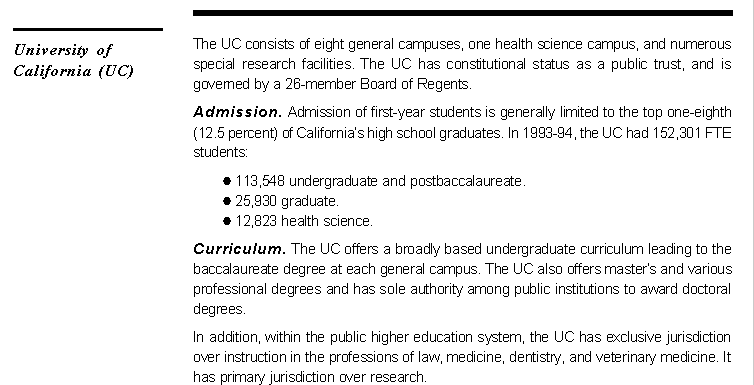
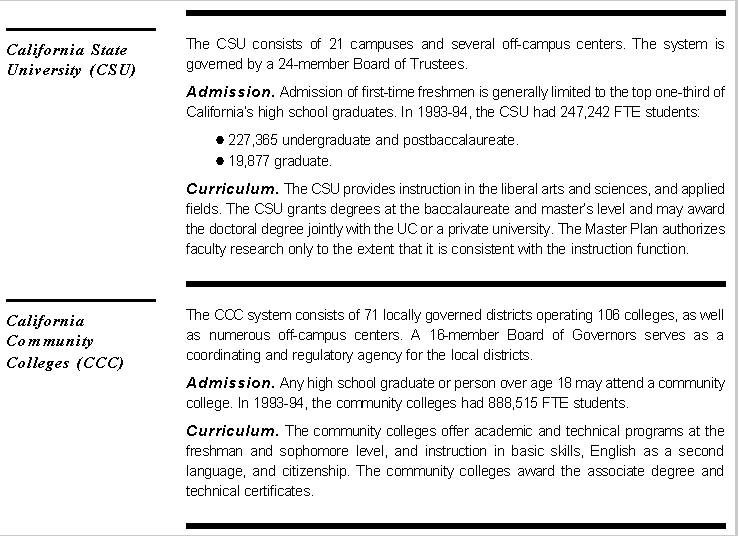
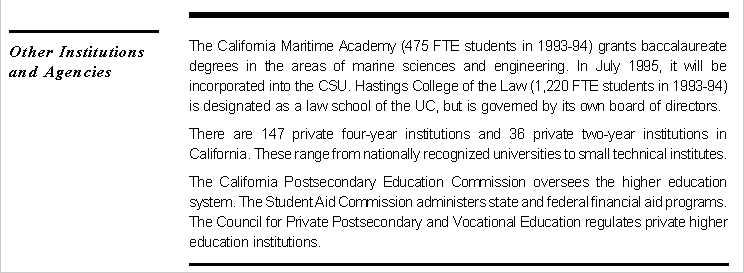
Since 1990-91, higher education enrollment has declined by 11 percent at the CSU, 2.5 percent at the community colleges, and 2.3 percent at the UC. The total decline of 58,000 students is the equivalent of three large campuses. The decline is probably due to a number of factors, including course section reductions, fee increases, declines in the economy generally, and actions taken by the institutions to limit enrollment.
The table below compares the number of first-time freshmen (under age 20) from California's high schools in the state's three higher education segments with the number of high school graduates. It shows that the college-going rate fell to 52 percent in 1993. Since 1990, the number of high school graduates has increased by 5.3 percent, while the number of young first-time freshmen has increased by less than 1 percent.
The change in the number of young first-time freshmen varies by institution. Since 1990, the CSU experienced a 24 percent decline in young first-time freshmen, while the community colleges experienced a 7.5 percent increase.
The table on the next page provides a profile of undergraduate students at the three public segments.
Average Age. UC undergraduates are the youngest; community college students are the oldest.
Attendance. Almost all undergraduates at the UC and most at the CSU attend full-time. Most community college students attend part-time. Many students transfer among colleges--roughly one-half of the students graduating from the UC and the CSU have attended more than one institution prior to graduation.
Racial and Ethnic Group. Around one-half of the undergraduates are white. Community colleges enroll the highest proportion of Latino and African-American students while the UC enrolls the highest proportion of Asian students.
Gender. Slightly over one-half of the students enrolled are women.
Family Income. A greater proportion of undergraduates at the UC are dependent on their parents for financial support (as defined under federal law) than at the other two segments. Parental income is highest at the UC and lowest at the community colleges. Independent student incomes are higher at the CSU and community colleges than at the UC, probably reflecting higher proportions of students and their spouses who are employed full-time.
From 1987 to 1992, all three public higher education segments have experienced increases in the proportions of Latino and Asian students (and, to a lesser extent, African-American students), and decreases in the proportion of white students. (These racial and ethnic categories are as reported by the California Postsecondary Education Commission.)
These changes generally reflect the state's increasing racial and ethnic diversity. However, continued disparities between the racial and ethnic make-up of high school graduates and public college students suggest that public institutions will need to continue to address the educational issues raised by cultural and linguistic diversity.
A fall 1994 report by the Demographic Research Unit in the Department of Finance projects that enrollments will increase by 17 percent at the UC and 25 percent at the CSU from 1994-95 to 2003-04. This is equivalent to about 25,000 additional full-time equivalent (FTE) students at the UC and about 60,000 additional FTE students at the CSU by 2003-04.
The report also projects that community college enrollments will increase by 19 percent over the next ten years. This is equivalent to about 175,000 additional FTE students by 2003-04.
Return to Cal Guide Table of Contents
ENROLLMENT
Higher Education Enrollment Has Declined Since 1990-91

College-Going Rates of Recent High School Graduates Are Declining
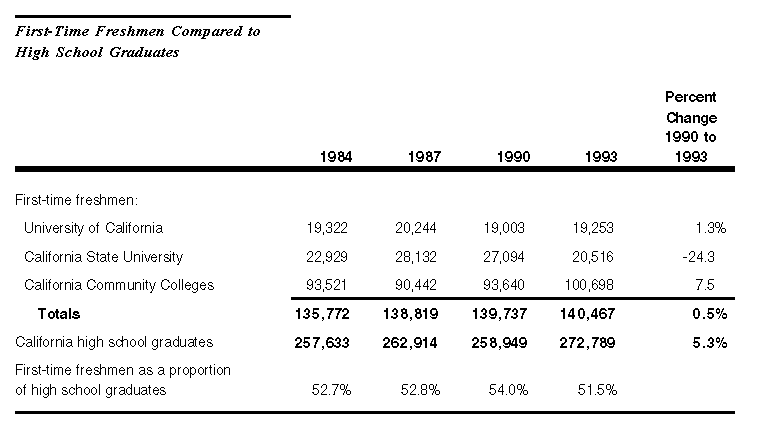
Student Populations Vary Significantly; Diversity Has Increased
